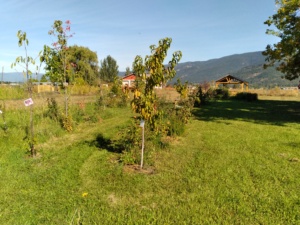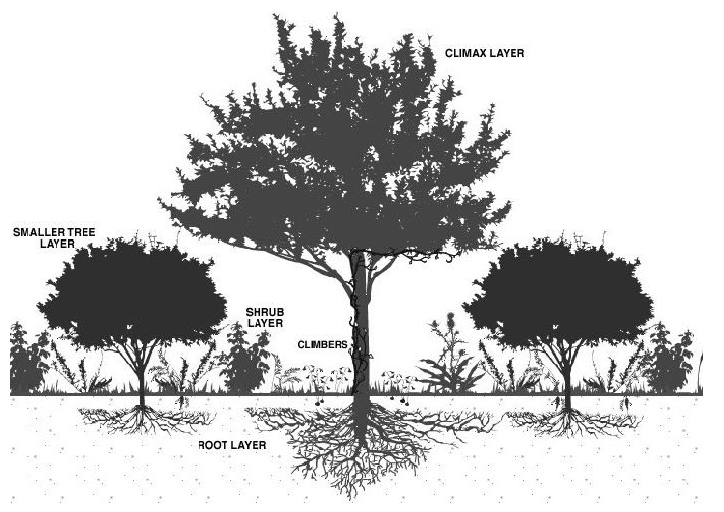A grant from Tree Canada enabled the creation of an edible trees forest garden at Pleasant Valley Wetland Heritage Park in September 2020. A hardworking team of volunteers from the Armstrong Spallumcheen Trails Society helped us to plant over ninety trees and shrubs provided by Sagebrush Nursery in Oliver and Blue Mountain Nurseries in Spallumcheen.

Forest gardens have been used for millennia in the tropics. They are often small and there are mentions of Amerindians using forest gardens composed of honey locust, butternuts, plums and other native plants.
An edible trees forest garden typically includes a diverse inter-planting of fruit trees with edible perennial species such as fruits, berries, nuts, perennial and self-seeding annual vegetables and herbs, onions and rhubarb. But forest gardens can also include many other yields such as medicinal plants, coppicing plants like willow or dogwood, plants for a wide range of crafting activities, flower production, harvestable timber species, perennial plants for bio-fuel production, and spaces for relaxation, recreation, learning and retreat.
A Forest Garden contains three layers of Production
1) Tree Layer: large or small fruit, nut and nitrogen fixing trees.
2) Shrub layer: small fruit and nitrogen fixing.
3) Perennial layer: vegetables, herbs, flowers
Benefits of a Polyculture (different species in one area)

Pests spread slowly or not at all
Pest population buildup is slowed or halted
More habitats for beneficial insects and wildlife
Different tree species demand different nutrients so a lack of certain nutrients is less likely
![]()
